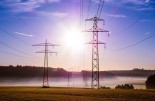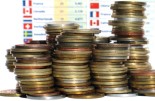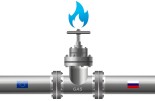La Française: Making water circularity a priority of the state
La Française: Making water circularity a priority of the state

Water is essential for the survival of life on earth, but under the pressures of population growth and climate change, freshwater resources are becoming scarce.
More than 2.3 billion people live in countries subject to water stress (when demand exceeds available resources), amounting to more than a third of the world's population. Experts predict that by 2025, almost 460 million people in Africa will be living in water-stressed areas, while 230 million Africans will be facing water shortages[1]. Efforts are being made to implement solutions such as water recycling, but there are still many obstacles to overcome.
Water recycling - a long time coming
Wastewater reuse, also known as water reclamation or water recycling, is increasingly recognised as a sustainable solution to the world's growing water crisis. Rather than considering wastewater as a product to be disposed of, it can be treated and purified to limit freshwater consumption. The treated water can be used for agricultural and industrial purposes or for groundwater replenishment. Some countries have already taken action on a large scale. In Italy and Spain, for example, respectively 8% and 14% of wastewater is reused. In Israel, 85% of wastewater is recycled[2].
As a consequence of climate change, many regions around the world are seeing their water resources diminish drastically. The United Nations even estimates that global demand for freshwater will exceed supply by 40% by 2030[3]. In France, a record period of 32 days without rain was recorded between January and February 2023, delaying the replenishment of groundwater and impacting available water resources. In South Africa, the severe drought suffered between 2018 and 2021, combined with the rise in population, has further exacerbated the crisis.
Despite the many benefits of wastewater reuse, its uptake has been slow and primarily restricted to countries the most exposed to water stress, in other words the most vulnerable. In France, for instance, only 1% of wastewater is reused. This figure is far behind Spain and Italy, which are exposed to recurring droughts. Another obstacle is the stigma associated with recycled-water use, even though numerous reports show that recycled wastewater is not only as safe as conventional potable water but can even be less toxic than certain natural water sources[4].
A recycled-water safety communication campaign would be a prerequisite to overcome public objection. However, the primary obstacle to implementing recycling methods is no doubt the lack of technology and expertise in the field.
Generally speaking, there are three stages to wastewater treatment. Primary wastewater treatment refers to the filtering of solid waste and chemical purification, while secondary treatment involves the biological purification of wastewater. This is followed by tertiary treatment: wastewater is converted into good quality water that can be used for a variety of purposes. Each stage of the treatment process necessitates specific technology and infrastructure requirements, which implies significant financial investments.
Governments have a role to play in bringing down these barriers and facilitating the adoption of these new practices. Financial incentives to companies and local authorities, such as subsidies or preferential financing terms, for investment in water reuse and public awareness campaigns are just two of the options available.
Freshwater preservation depends on the guiding principles of a circular economy: reduce, reuse and recycle. However, the reuse or recycling of wastewater, which is an effective solution for coping with resource shortages, will not solve all the water-related problems to be faced in the coming decades. Optimised methods of use are needed to reduce water consumption.
Agriculture, which accounts for more than 70% of water consumption worldwide[5], remains a priority. Reducing water pollution is also a related objective. Water contamination disrupts the water cycle and has a negative impact on available resources.
Making water circularity a priority of the state is the only viable course of action. France, for example, has defined an ambitious objective: to triple the volume of reused water by 2025 (19,000 m3 per day in 2019)[6].
To reach it, the government recently unveiled a water crisis plan, which includes some 50 measures[7] to re-use, share and save water. The aim is to provide funding to encourage water reuse and reduce the country’s water footprint. Once the support framework is in place, it will be up to consumers to bridge the gap.
[1] The Africa Water Vision for 2025: Equitable and Sustainable Use of Water for Socio-Economic Development (afdb.org)
[2] Parliamentary question | Developing the potential for reusing wastewater in Europe | E-002057/2022 | European Parliament (europa.eu)
[4] Lau, S.S., Bokenkamp, K., Tecza, A. et al. Toxicological assessment of potable reuse and conventional drinking waters. Nat Sustain 6, 39-46 (2023). https://doi.org/10.1038/s41893-022-00985-7
[7] Water plan: Reuse of wastewater, progressive pricing, Ecowatt for water, etc. what you need to remember from Emmanuel Macron's speech (lemonde.fr)










